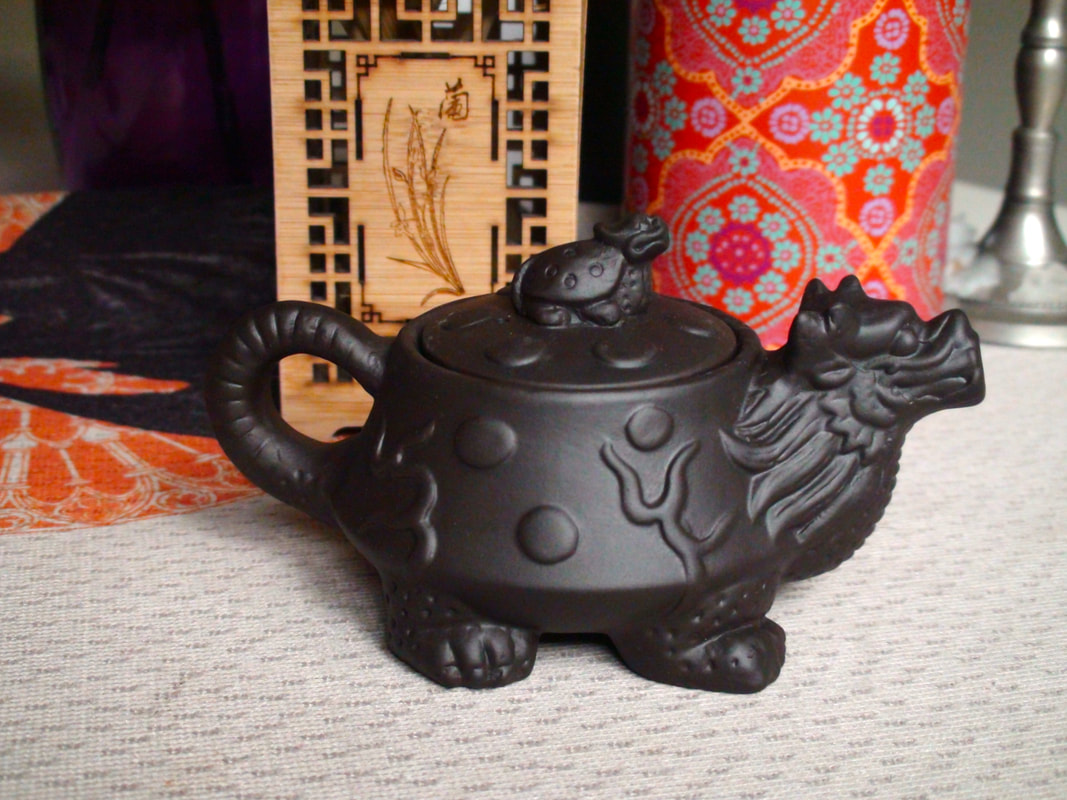|
by Cassandra Vincent
I have my first of what I hope to be many yixing teapots and I am eager to share what I am learning. The experience and detail of what it is to have tea in a yixing teapot is complex and ever-evolving for many reasons. Let’s start with a base: Yixing is an area in eastern China and the clay for yixing teapots, if they are authentic, is mined there. Zisha is the purple clay used for yixing teapots, though in the end they can appear anywhere from yellow to green to terra cotta to brown to deep purple (what?! ). This zisha clay is special in that it is porous and holds heat well. Therefore the oils of the tea brewed in a yixing teapot leave behind some of their essence and, over time, the pot becomes infused with more and more tea flavor such that it is an ever changing experience to drink from it. Very unique. Very cool. This is one of the reasons it is common to dedicate a particular yixing teapot to a particular tea or at least a particular category of tea i.e. “I will only drink oolongs from this teapot”(I don’t think you need to make a solemn vow as such. Just whatever pact between you and your pot that works for you). The teapot is to be cured before use, kind of like a cast iron skillet, but the teapot is cured with water and tea not oil. It is a bit of a process dipping into boiling water first then steeping in tea, but as a yixing teapot is something to be enjoyed for years to come, for the tea drinker this ‘ceremony’ can be a fun one. I found multiple resources on curing yixing teapots, with minor variations to each so I did a blend of what felt best:
Some important points:
Another conclusion I came to was not to use any flavoured teas – there is such a range of quality with these and not all use natural flavourings that I am inclined to just plain leave them out. I am dedicating my first pot to the oolong category (no flavoured ones) but not one particular oolong tea. Perhaps I will save that for later in my tea journey when I discover one I feel so passionate about. This is just the beginning of what is a deep aspect of tea with a long history. I’ll be doing a series of posts on my exploration of the yixing tea experience because it is so deliciously detailed. Grab a pot of your favourite tea and join me. If you have a yixing pot you love, share a picture of it with us on Twitter, Facebook or Pinterest. Cheers! Comments are closed.
|
AuthorCassandra Vincent CategoriesAll Classic Tea Flavored And Funky For Love Of Tea Herbs Infusions Lifestyle And Health Matcha Meditative And ASMR Sessions Recipes And Uses Specialty Tea Brands Spices Tea Accessories Tea Adjacent Tea And... Tea And A Laugh Tea And Art Tea And Holidays Tea And Music Series Tea And TV Tea Around The World Tea Cocktails Tea Events Tea In Film Tea In History Tea Innovations Tea Pros Tea Shops/Shops With Tea Tea Types Teaware |


 RSS Feed
RSS Feed